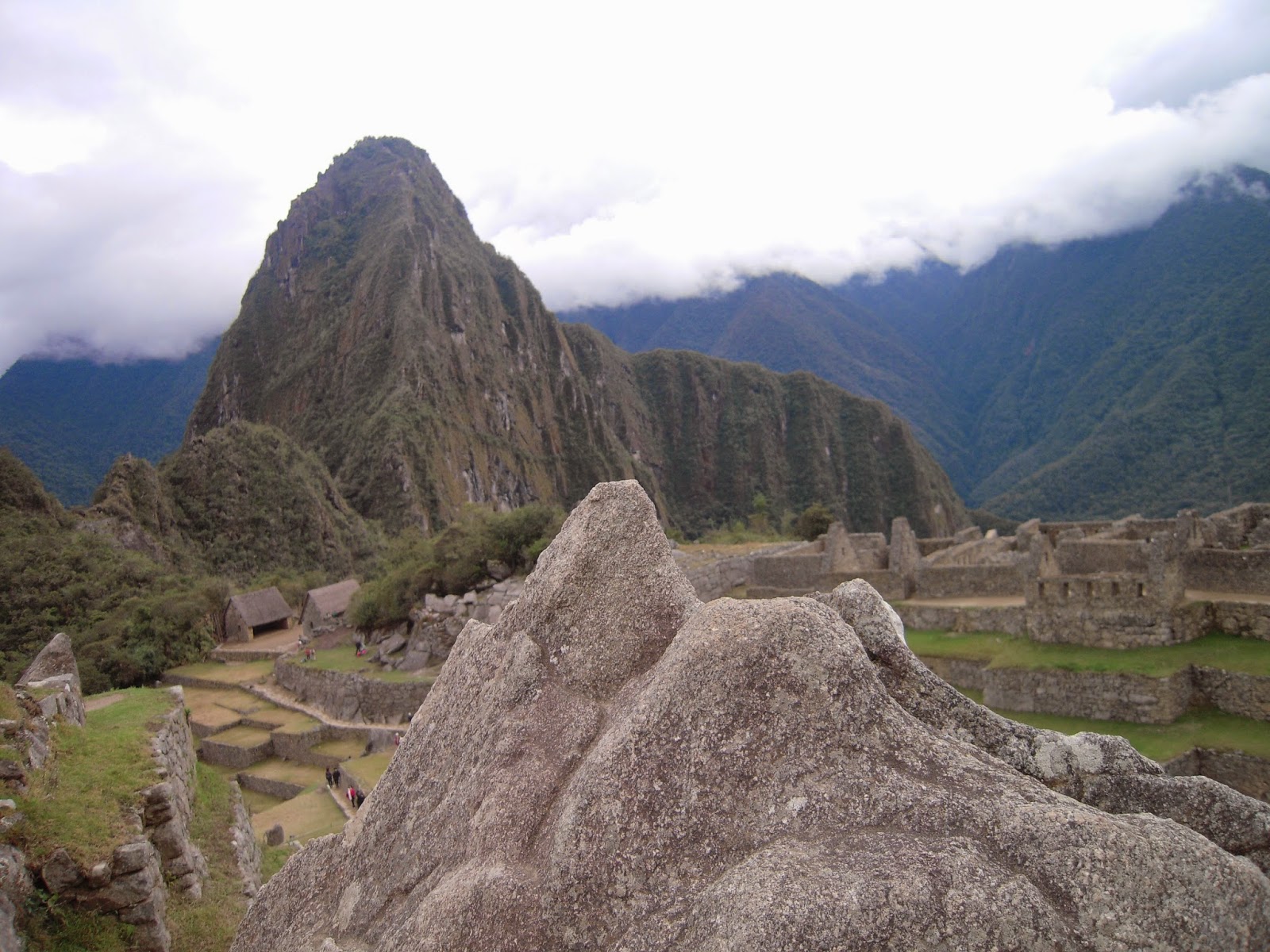The alarm went off that morning at 5:15 a.m., but it was unnecessary as the roosters had been crowing since well before dawn. After a hasty breakfast, we boarded a bus at around 7 a.m. that would take us up the mountain. I sat in a window seat which was very fortunate because I got an amazing view of our ascent. The road that the bus takes up to Machu Picchu is winding and serpentine, zig-zagging up the mountainside. Every time the bus turned to my side, I got an amazing view of the mountains surrounding the valley in which Aguas Calientes lies. The mountains in this section of the Andes are huge, giant monoliths covered in dense, thick, dark green foliage. They are so high, misty white clouds swirl around the tips and dip down into the valley.
 |
| The ruins of Machu Picchu with the peak Huayna Picchu rising majestically in the background. |
The first think Patrick did was take us up to the ruins of the agricultural terraces overlooking the main ruins so that we could take iconic photos of the site (see above!). Machu Picchu means 'old mountain' and is actually the name of the mountain peak opposite the ruins. Nobody knows what the original name of Machu Picchu was, just as nobody is exactly sure of its purpose. Patrick said it was probably constructed in 1440 or 1450, had its peak in 1480 or 1490, and was deserted by 1520. No one knows why it was deserted -- maybe disease, maybe news of the Spanish arrival, maybe a mass exodus to fight in the civil war between Atahualpa and Huascar.
 |
| These are the huge, majestic mountains capped with fluffy clouds that surround Machu Picchu on all sides. |
 |
| A deliberate rock formation within the ruins that is thought to mirror the shape and slope of the mountains behind it. |
 |
| Me standing at the edge of the stairs to nowhere -- they drop down nearly vertically after this point almost all the way to the valley floor. |
It took an hour to walk up the steep ridge trail, but we finally arrived at the end to the ruins of Intipunku. This part of the day was nice because there weren't nearly as many tourists, and much of the path we were able to walk alone. Us CIEE kids sat on a wall of the ruins and looked out at the breathtaking Machu Picchu spread. It was almost magical because during the day, there was a mixture of sun and clouds on the mountain top, but when we were sitting on the ridge, the entire mountains and valleys were in shadow, and the only thing gilded in sunlight were the ruins of Machu Picchu. It was eerily beautiful and definitely worth the walk to get there. At Intipunku, we were almost completely level with the tip of Huayna Picchu, the iconic peak that rises behind the ruins.
After a long day, we were finally exhausted from the hiking and the altitude, so after getting our passports stamped with the official stamp of Machu Picchu, we boarded the bus that took us back down to Aguas Calientes. This time, the mountain view was even more impressive because there was more sun. We boarded a train for the four hour journey back to Cuzco where we would spend our final night.
Day Four was our travel day back to real life in Lima, and so we boarded a plane early in the morning and were back home by lunchtime.


No comments:
Post a Comment